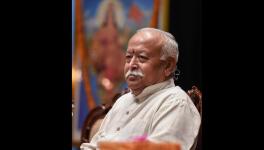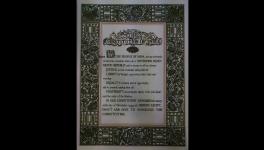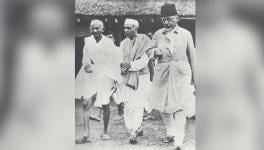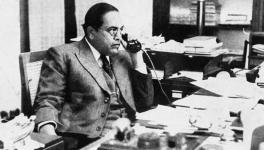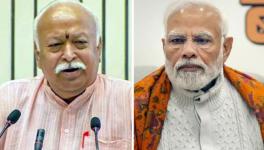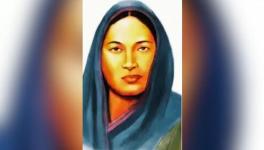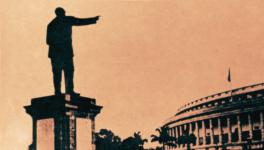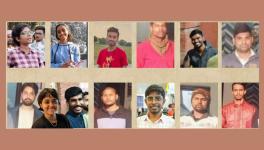Is Manusmriti Back With a Bang?
Representational use only.Image Source: Gaurilankesh News
Classical literature may contain pearls of wisdom, but time has also turned some of it into a minefield of inaccuracies. The great dramatist Shakespeare can inspire but is also hauled up for alleged anti-Semitism. Even Gautam Buddha has been scrutinised for his controversial observations about women.
In recent weeks, a debate has raged about 17th-century poet-saint Tulsidas’s epic poem Ramcharitmanas and its’ allegedly unfair and humiliating treatment of women and so-called lower castes. Voices to edit such books and scriptures or scrap them have grown louder. Yet, the Banaras Hindu University, a premier central university in Uttar Pradesh, has proposed something that, instead of settling the controversy, muddies the waters more.
The university’s Department of Dharmashastra and Mimansa, whose curriculum already includes studying the Manusmriti among ancient Indian scriptures, has proposed researching the “applicability” of Manusmriti in Indian society. It plans to use the funds received under the Centre’s Institutes of Eminence scheme, which provides research and development grants of up to Rs 1,000 crore each to ten select public-funded institutions.
The BHU’s proposal seems anachronous—and not just because it involves spending money on an esoteric subject, while public universities face a severe fund crunch forcing them to cut down even on essential expenses.
Nearly a century ago, during the first Dalit revolt of its kind in modern times, Dr BR Ambedkar, the legendary leader of the oppressed, symbolically burnt the Manusmriti in a public programme held at Mahad. On 25 December 1927, at the Mahad Satyagraha, he said in the presence of thousands of people from different parts of the Bombay province, as it was then known, that the text was a “gospel of counter-revolution”.
The resolution read out during the symbolic public “cremation” of the Manusmriti, proposed by Ambedkar’s associate Gangadhar Neelkanth Sahasrabuddhe, emphasised the intent of the organisers of the conference. After considering the verses of the Manusmriti, it said, the conference had formed the “firm opinion” that it “undermined the Shudra caste, thwarted their progress, and made their social, political and economic slavery permanent”. The resolution said the context of the text is unworthy of a religious or sacred book. That is why participants performed the “cremation” rites of the book at the conference. The resolution even described the book as “divisive” and a “destroyer of humanity”. All these facts are recorded in public intellectual Anand Teltumbde’s book, Mahad: The Making of the First Dalit Revolt, published by Navayana in 2017.
Nearly a quarter-century later, while dedicating the Constitution to the nation, Ambedkar, who headed its drafting committee, famously declared that the Constitution had “ended the rule by Manu”.
However, the Hindu Mahasabha and the Rashtriya Swayamsevak Sangh (RSS) never saw eye-to-eye with a modern Constitution for India. Their leaders made their objections to modernising Indian tradition clear as their fascination for the Manusmriti. In the late sixties, Maharashtra witnessed a massive movement of Dalits and other democratic sections to protest the RSS supremo’s comments praising the Manusmriti in an interview with the Marathi newspaper, Nava Kaal.
Yet last year, Justice Pratibha Singh of the Delhi High Court spoke of the Manusmriti in glowing terms at a programme held under the auspices of the Federation of Indian Chambers of Commerce and Industry or FICCI. She said scriptures like Manusmriti give women “a very respectable position”, a remark that created a furore, earning her much criticism for promoting regressive ideas filled with “casteism and classism”.
To think that academics at the Banaras Hindu University are unaware of the stormy history of this book and its disparaging comments about women and non-elite castes would be the height of incredulity. Undoubtedly, the department seems deliberately bent on delegitimising all the struggles and yearnings for change in Indian society. That desire for change has refused to die, but the university and like-minded institutions and public figures are keen to provide new legitimacy to the right-wing and regressive forces who want to package this “gospel of counter-revolution”, whether people like it or not.
The author is an independent journalist. The views are personal.
Get the latest reports & analysis with people's perspective on Protests, movements & deep analytical videos, discussions of the current affairs in your Telegram app. Subscribe to NewsClick's Telegram channel & get Real-Time updates on stories, as they get published on our website.









